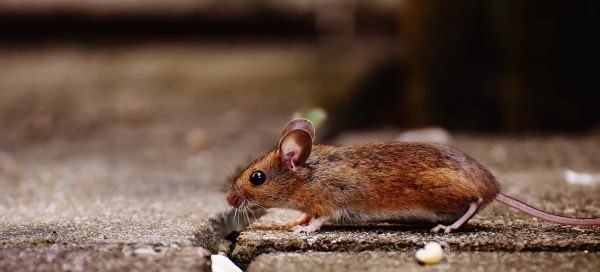Introduction
Mice are one of the most common household pests, causing significant concern for homeowners. They can spread diseases, contaminate food, and cause structural damage. Identifying the presence of mice early can prevent an infestation from becoming a major problem.
In this article, we will explore the common signs of mice in your home and provide practical steps you can take to address the issue. Our primary focus will be on understanding mice behavior, identifying their presence, and implementing effective control measures.
For more detailed information on treating mice in your home, you can refer to this helpful guide on how to treat mice in the home.
Understanding Mice Behavior

Mice are small rodents that are highly adaptable to various environments. They are nocturnal, meaning they are most active at night, which helps them avoid predators and human interaction. Mice have excellent senses of smell, hearing, and touch, allowing them to navigate and find food with precision.
Nocturnal Activity
Mice are primarily active at night, making their presence less noticeable. Unusual nighttime noises like scratching or scurrying can indicate their activity. They often follow the same paths, creating visible runways marked by dirt and grease.
Sensory Capabilities
-
- Smell: Mice use their keen sense of smell to locate food sources and detect danger from significant distances.
- Hearing: They can detect high-frequency sounds, aiding in communication and alertness to threats.
- Touch: Whiskers help them navigate and explore their environment, even in the dark.
Rapid Reproduction
A single female mouse can produce up to 60 offspring in a year, with litters of 5-12 young every three weeks. This rapid reproduction can quickly turn a minor problem into a significant infestation.
Nesting and Feeding
Mice build nests using soft materials like shredded paper and fabric, typically hidden in secluded areas such as wall cavities and attics. They are omnivores but prefer grains, fruits, and seeds, often contaminating food supplies and damaging household items.
Common Signs of Mice in Your Home

Droppings
One of the most obvious signs of mice in your home is the presence of droppings. Mouse droppings are small, dark, and pellet-shaped, typically about 1/8 to 1/4 inch long. You will often find these droppings in areas where mice are active, such as kitchen cabinets, pantries, and along baseboards. Fresh droppings are dark and moist, while older droppings become dry and crumbly.
Gnaw Marks
Mice have strong teeth that grow continuously throughout their lives. To keep their teeth in check, they gnaw on various materials, including wood, plastic, and electrical wiring. Look for gnaw marks on furniture, baseboards, and food packaging.
These marks are typically small, with rough edges. Gnawing on electrical wires can pose a serious fire hazard, making it essential to address the issue promptly.
Nesting Materials
Mice build nests using soft materials such as shredded paper, fabric, and insulation. You may find these nests in hidden areas, such as behind appliances, inside wall cavities, or in the attic. Nests are often accompanied by droppings and a distinct musky odor. If you come across a nest, it is a clear indication that mice are present and potentially breeding in your home.
Tracks and Runways
Mice tend to follow the same paths between their nests and food sources, creating visible tracks and runways. These tracks can appear as greasy smears or footprints along walls, baseboards, and floors. You may also notice urine stains along these paths, which can be detected using a UV light. Observing these runways can help you determine the extent of the infestation and identify areas that require attention.
Nocturnal Noises
Since mice are most active at night, you may hear scratching, scurrying, or squeaking noises coming from walls, ceilings, or under floors. These noises are often more noticeable in quiet areas of the house. If you hear such sounds, it is likely that mice are moving about in search of food or nesting materials.
Unusual Pet Behavior
Pets, especially cats and dogs, have a heightened sense of smell and hearing. If your pet suddenly becomes fixated on a particular area, such as a wall or cupboard, it may be an indication of mouse activity. Pets may scratch, paw, or bark at these areas, alerting you to a potential infestation.
What to Do About Mice in Your Home

Identify and Seal Entry Points
Mice can enter your home through small gaps and cracks as small as 1/4 inch. Inspect the exterior of your home for potential entry points, such as gaps around doors, windows, vents, and utility lines. Seal these openings using caulk, steel wool, or weatherstripping to prevent mice from entering. Pay special attention to areas where pipes and wires enter the home, as these are common entry points for mice.
Keep Your Home Clean
Maintaining a clean and clutter-free home can deter mice from taking up residence. Store food in airtight containers and promptly clean up spills and crumbs. Regularly take out the trash and ensure that trash bins have tight-fitting lids. Declutter storage areas, such as basements and attics, to reduce hiding places for mice.
Use Traps and Baits
There are various types of traps and baits available to control mice populations. Snap traps, glue traps, and live traps can be effective in capturing mice. Place traps along known runways and near entry points. Use peanut butter, chocolate, or dried fruit as bait to attract mice. Check traps regularly and dispose of captured mice promptly.
Implement Rodent-Proofing Measures
In addition to sealing entry points, consider implementing rodent-proofing measures to make your home less attractive to mice. Install door sweeps on exterior doors and repair damaged screens on windows and vents. Use metal mesh to cover vents and openings that cannot be sealed completely. Trim back vegetation and keep firewood stored away from the house to reduce potential hiding spots for mice.
Conclusion
Dealing with a mouse infestation can be a daunting task, but early identification and prompt action can make a significant difference. By recognizing the common signs of mice in your home and implementing effective control measures, you can protect your home and family from the potential hazards associated with these pests.
Remember to maintain a clean and rodent-proof home to prevent future infestations. If needed, do not hesitate to seek professional help to ensure a mouse-free environment.


